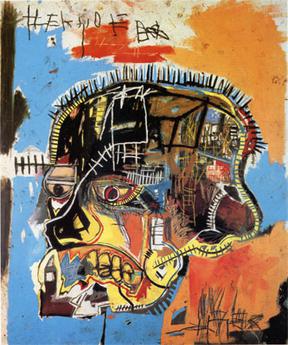 Simon Coonan over a Slate posits a simple question:
Simon Coonan over a Slate posits a simple question:
“How did the art world become such a vapid hell-hole of investment-crazed pretentiousness?”
In his scathing attack on the contemporary art scene replete with Twitter feeds, pool parties, and gallery-curated designer cheese, Coonan quite rightly asks why window dressing and marketing have replaced artistry and craftsmanship. And, more importantly, has big money replaced great, new art?
As an example, the biggest news from Art Basel, the biggest art show in the United States, is not art at all. Celebrity contemporary artist Jeff Koons’ has defected to a rival gallery from his previous home with Larry Gagosian. Gagosian to the art cognoscenti is the “world’s most powerful art dealer”.
[div class=attrib]From Slate:[end-div]
Freud said the goals of the artist are fame, money, and beautiful lovers. Based on my artist acquaintances, I would say this holds true today. What have changed, however, are the goals of the art itself. Do any exist?
How did the art world become such a vapid hell-hole of investment-crazed pretentiousness? How did it become, as Camille Paglia has recently described it, a place where “too many artists have lost touch with the general audience and have retreated to an airless echo chamber”? (More from her in a moment.)
There are sundry problems bedeviling the contemporary art scene. Here are eight that spring readily to mind:
1. Art Basel Miami.
It’s baaa-ack, and I, for one, will not be attending. The overblown art fair in Miami—an offshoot of the original, held in Basel, Switzerland—has become a promo-party cheese-fest. All that craven socializing and trendy posing epitomize the worst aspects of today’s scene, provoking in me a strong desire to start a Thomas Kinkade collection. Whenever some hapless individual innocently asks me if I will be attending Art Basel—even though the shenanigans don’t start for another two weeks, I am already getting e-vites for pre-Basel parties—I invariably respond in Tourette’s mode:
“No. In fact, I would rather jump in a river of boiling snot, which is ironic since that could very well be the title of a faux-conceptual installation one might expect to see at Art Basel. Have you seen Svetlana’s new piece? It’s a river of boiling snot. No, I’m not kidding. And, guess what, Charles Saatchi wants to buy it and is duking it out with some Russian One Percent-er.”
2. Blood, poo, sacrilege, and porn.
Old-school ’70s punk shock tactics are so widespread in today’s art world that they have lost any resonance. As a result, twee paintings like Gainsborough’s Blue Boy and Constable’s Hay Wain now appear mesmerizing, mysterious, and wildly transgressive. And, as Camille Paglia brilliantly argues in her must-read new book, Glittering Images, this torrent of penises, elephant dung, and smut has not served the broader interests of art. By providing fuel for the Rush Limbaugh-ish prejudice that the art world is full of people who are shoving yams up their bums and doing horrid things to the Virgin Mary, art has, quoting Camille again, “allowed itself to be defined in the public eye as an arrogant, insular fraternity with frivolous tastes and debased standards.” As a result, the funding of school and civic arts programs has screeched to a halt and “American schoolchildren are paying the price for the art world’s delusional sense of entitlement.” Thanks a bunch, Karen Finley, Chris Ofili, Andres Serrano, Damien Hirst, and the rest of you naughty pranksters!
Any taxpayers not yet fully aware of the level of frivolity and debasement to which art has plummeted need look no further than the Museum of Modern Art, which recently hosted a jumbo garage-sale-cum-performance piece created by one Martha Rosler titled “Meta-Monumental Garage Sale.” Maybe this has some reverse-chic novelty for chi-chi arty insiders, but for the rest of us out here in the real world, a garage sale is just a garage sale.
…
8. Cool is corrosive.
The dorky uncool ’80s was a great time for art. The Harings, Cutrones, Scharfs, and Basquiats—life-enhancing, graffiti-inspired painters—communicated a simple, relevant, populist message of hope and flava during the darkest years of the AIDS crisis. Then, in the early ‘90s, grunge arrived, and displaced the unpretentious communicative culture of the ‘80s with the dour obscurantism of COOL. Simple fun and emotional sincerity were now seen as embarrassing and deeply uncool. Enter artists like Rachel barrel-of-laughs Whiteread, who makes casts of the insides of cardboard boxes. (Nice work if you can get it!)
A couple of decades on, art has become completely pickled in the vinegar of COOL, and that is why it is so irrelevant to the general population.
[div class=attrib]Read the entire article following the jump.[end-div]
[div class=attrib]Image: Untitled acrylic and mixed media on canvas by Jean-Michel Basquiat, 1984. Courtesy of Wikipedia.[end-div]
